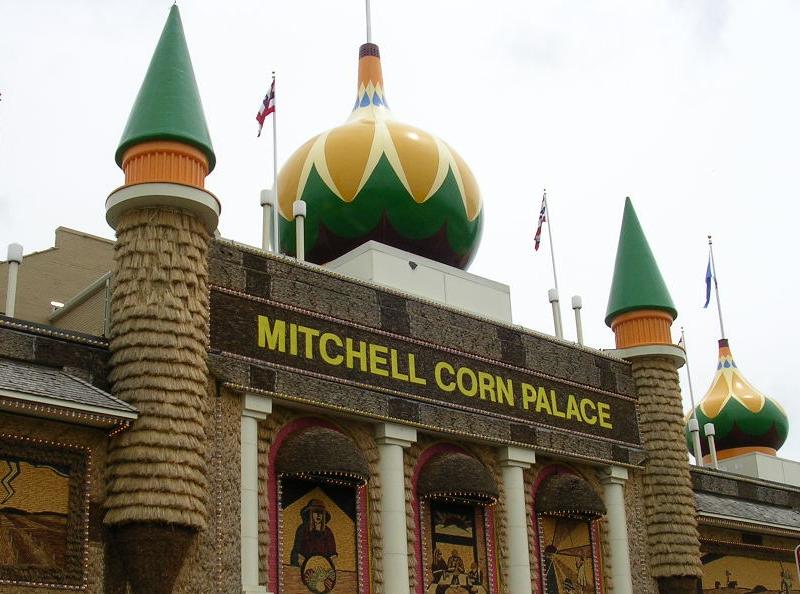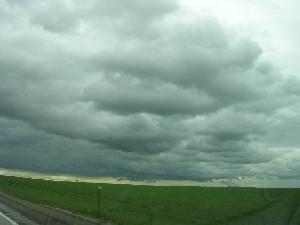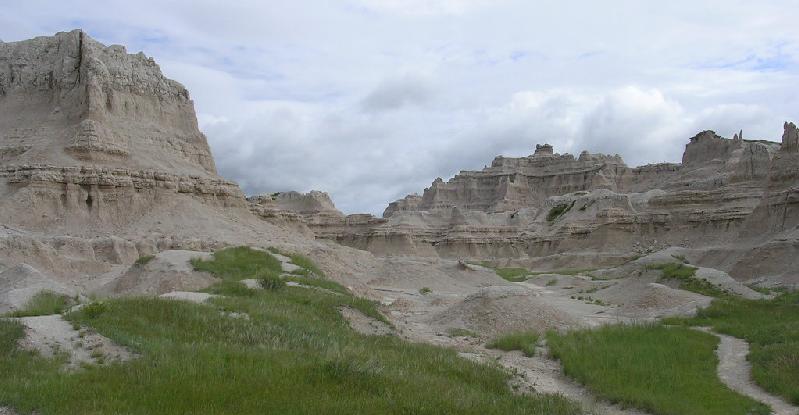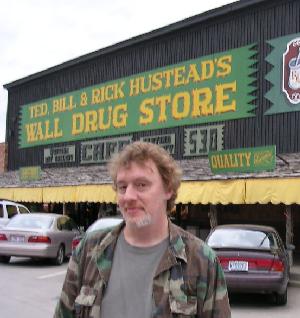| Highway signs leading up to Mitchell
set the mood: "It's a MAIZE-ing!" "You're almost EAR!" Getting off
the highway, more signs took us past the Middle Border Museum and into
town.
The first Corn Palace was built in 1892 as a showcase
for all the crops grown in the area around Mitchell. It was also a slap
back at Lewis & Clark, who wrote in their famous journals that nobody
could ever make a living farming in that area. The idea took hold and grew,
and there has been a Corn Palace in Mitchell ever since. Every year, thousands
of bushels of corn and grain are used to decorate the Palace, which attracts
a half million visitors each year.
Inside, the Corn Palace is an autitorium. There's a stage
on one end, but with a flat area directly in front big enough for a basketball
court. When we were there, the court was taken over by a gigantic gift
shop, but dozens of basketball games are played there every years by area
schools. Zack and I got some souveniers and a crushed penny. The exterior
is decorated with clever murals made of corn husks-- some very elaborate.
The designs change every year.
There was a monument across the street to Oscar Howe,
the artist who made the exterior murals for decades. The main street has
many 19-century buildings and is full of little shops and restaurants.
One place was selling moon pie-type treats called "cow patties." Um,
no thanks. We took some more pictures and hit the road. Time was marching
on. It started to sprinkle again. |
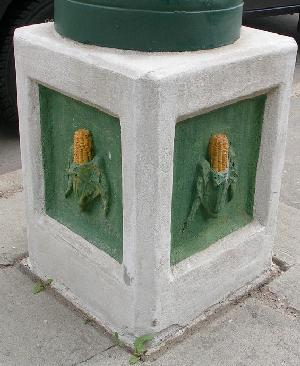 Detail of Mitchell Streetlamp
Detail of Mitchell Streetlamp
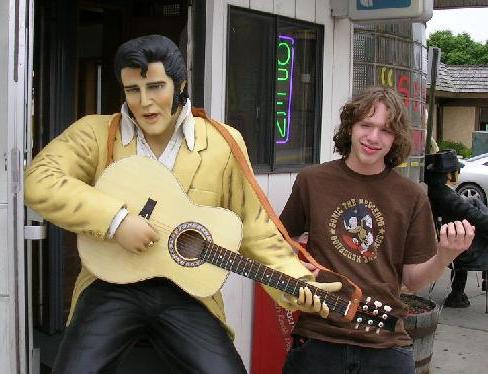 Zack with "the King," downtown Mitchell
Zack with "the King," downtown Mitchell
|
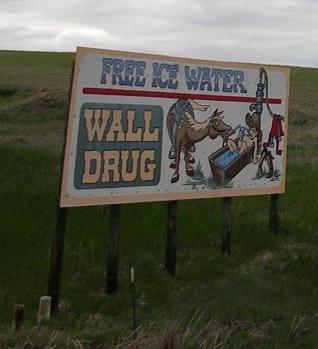
 Papillion, Nebraska to Rapid City, South Dakota
Papillion, Nebraska to Rapid City, South Dakota

